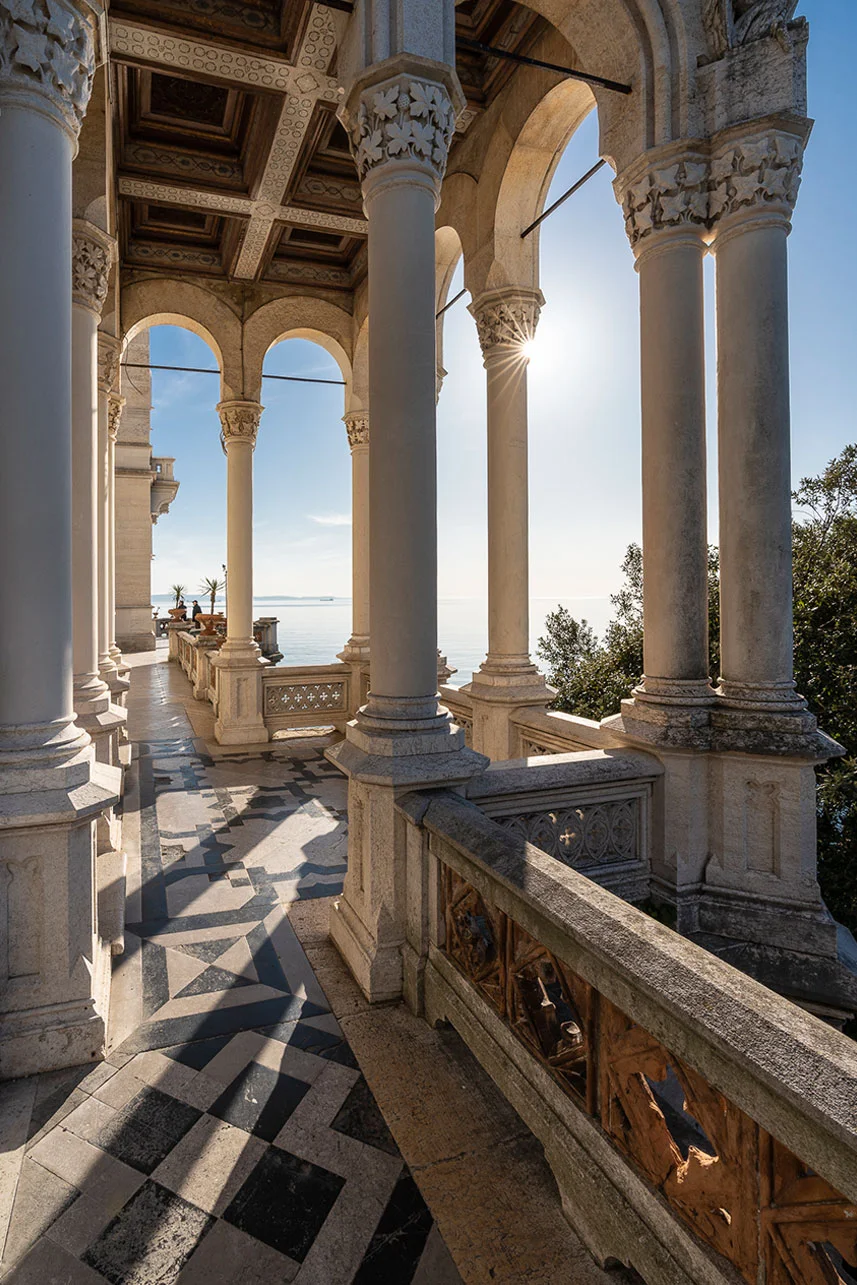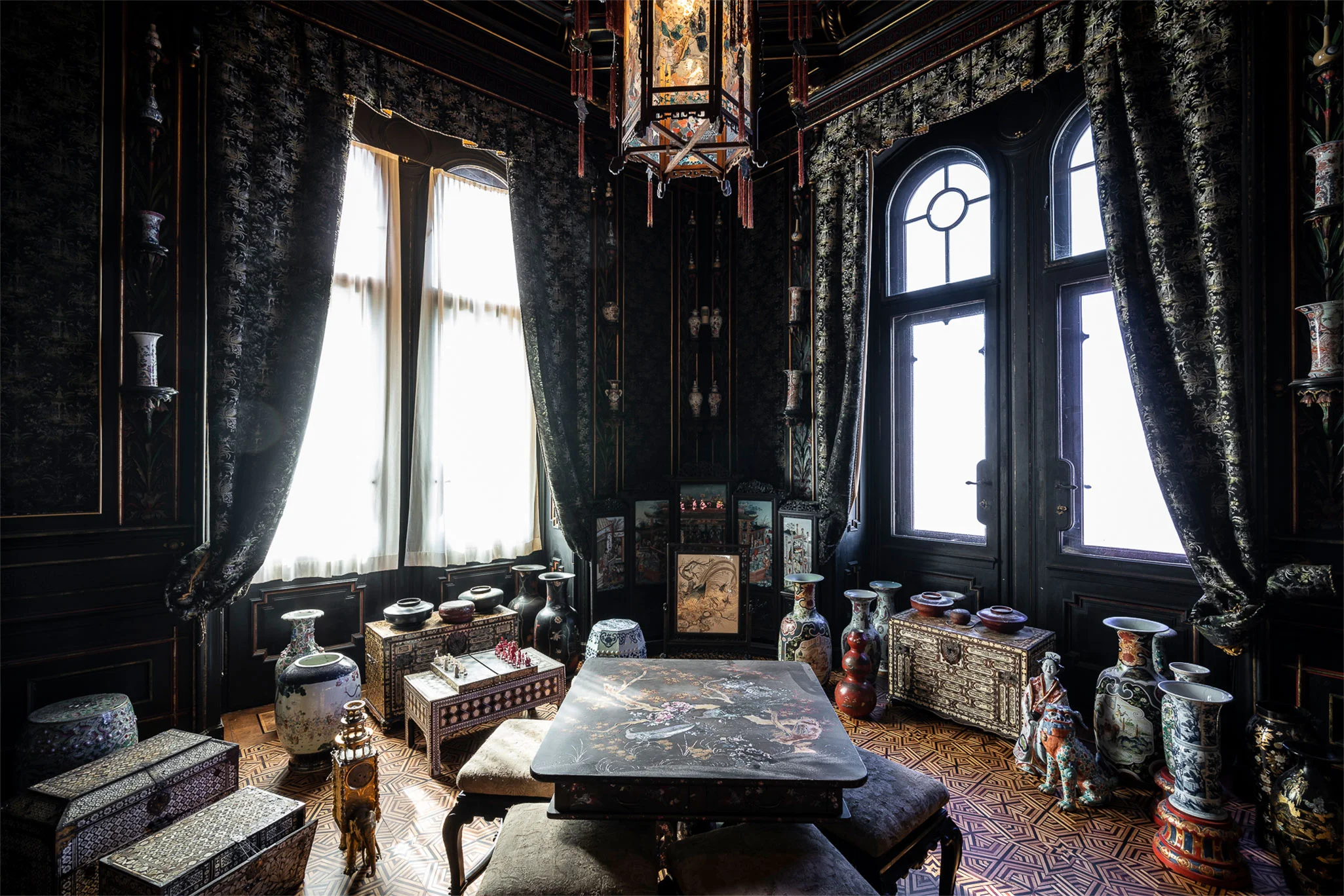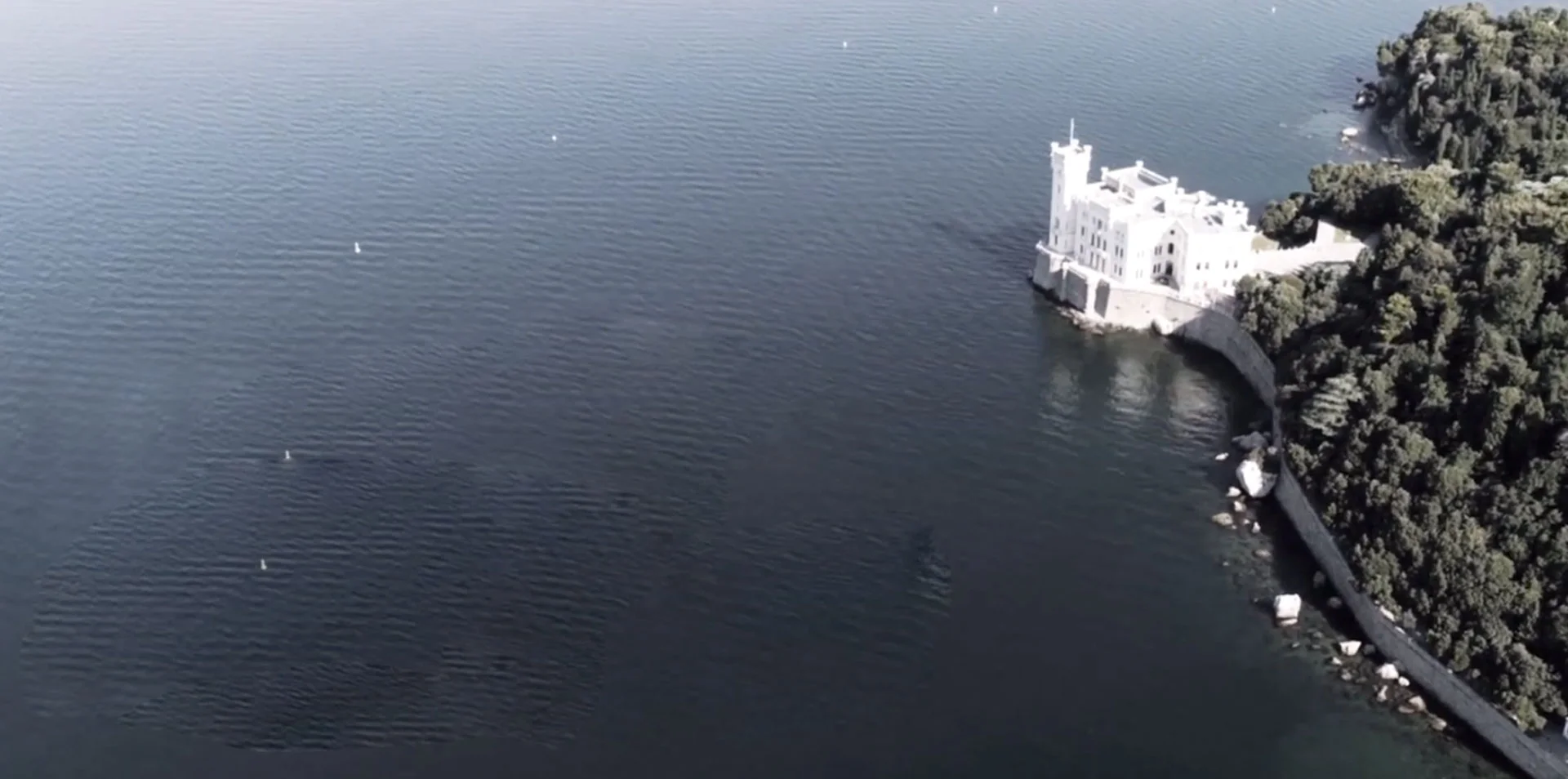 Location: Oriental sitting rooms
Location: Oriental sitting rooms
This table pendulum clock in oriental style was originally placed in the atrium of the second floor of the castle, opposite the grand staircase, together with a group of porcelain of oriental origin, as documented by photographs taken by the Trieste photographer G. Malovich during the period when Maximilian lived at Miramare.
An elephant holds an elegant rectangular canopy, richly engraved and chiselled, in which the clock is housed. The surface is decorated with podded vases from which intertwined flowers and plant motifs branch out; the edges are embellished with small columns with human and animal protomes. On top of the canopy rests a plate on which a structure of three overlapping and concentric cylinders, which house the chimes (two still remain), stands.
The clock is inspired by a model prevalent in Europe between the seventeenth and eighteenth centuries, whose major centre of production was Augsburg, Germany, which combined the arts of watchmaking and sculpture and played on the interpenetration of animal figure and mechanism to evoke the idea of the automaton, the artifact with a life of its own. In these clocks, the mechanism housed inside operated not only the clock hands and chimes, but also one or more of the animal’s movements. The Miramare specimen features no such mechanism and was presumably chosen by Maximilian for the exotic subject.





Recent Comments